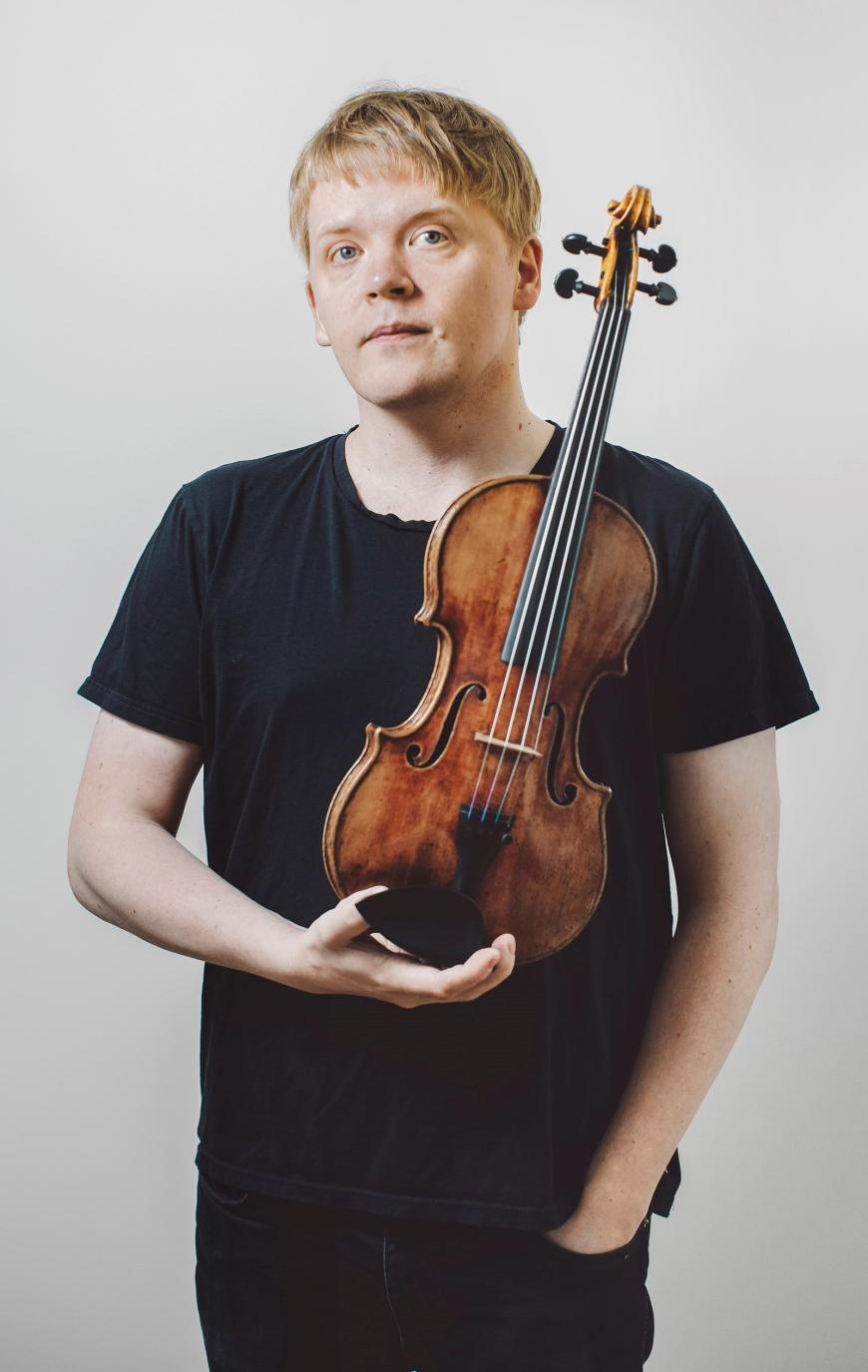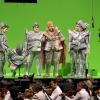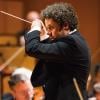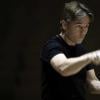
Composers are all too aware that first performances of new works are easy to come by but second performances and beyond are what’s needed to determine whether a piece has any staying power. Fortunately, this seems to be happening often on the playlists of the Los Angeles Philharmonic, even within the once-unlikely populist spaces of the Hollywood Bowl.
Tuesday night at the Bowl (Aug. 9), there were no less than two second performances of works that were given their world or U.S. premieres by the LA Phil in the recent past. Along with some standard Dvořák repertoire, the return performances were entrusted to Dalia Stasevska, yet another rising product of Finland’s fruitful Sibelius Academy and now the chief conductor of the once-obscure Lahti Symphony Orchestra that Osmo Vänskä put on the world map. She also happens to be married to Sibelius’s great-grandson, the composer Lauri Porra.
First on Stasevska’s docket was the 2021 Jack Ross orchestration of Anna Meredith’s post-minimalist blast Nautilus. The original, mostly electronic version from 2011, a YouTube favorite, was bluntly described in the comments section by one Eex Diddy as follows: “This is the soundtrack of an anxiety attack.” Well, in the vast outdoors, before a far-from-capacity crowd, it wasn’t nearly as in your face as the U.S. premiere by the Phil under Thomas Adès indoors last April, let alone the YouTube version. Yet it’s still five minutes of high-energy fun, threatening at first to break out into John Adams’s Short Ride in a Fast Machine but staying on its own tumultuous, thumping, repetitive course. Stasevska rocked out on the thing in her loose-fitting outfit.

There seems to be continuing confusion as to the title of Daníel Bjarnason’s concerto for violin and orchestra that he wrote for the Finnish maverick virtuoso Pekka Kuusisto. Originally just called Violin Concerto, the title was changed to Scordatura somewhere between its proposed (and postponed) premiere at the Phil’s monumental April 2017 Reykjavík Festival and the actual world premiere right here in the Bowl in August of that year. That is, until concert time, when the title was suddenly switched back to Violin Concerto. Now, at its second performance — also with Kuusisto on hand — while the Bowl season brochure says Violin Concerto, the digital program refers to it as Scordatura. Which is it, guys?
Whatever it’s called, the piece remains an anomaly in Icelandic music and much of Bjarnason’s own music that I’ve heard in that drones do not play a major part in underpinning the piece (though some are there). “Scordatura” refers here to the violin’s G string detuned down to a low D, which accounts for the scratchy tone quality from Kuusisto’s instrument. The concerto is influenced by Scandinavian folk tunes that Kuusisto likes to play — and indeed, he offered two of them as engaging encores: one a modal Finnish folk dance, the other a Swedish reel-like dance with an irregular beat.
The concerto opens with Kuusisto plucking and whistling; the only equivalent sound that comes to mind, perhaps incongruously, is Brazilian maverick Hermeto Pascoal’s similarly eerie whistling on “Little Church” from Miles Davis’s Live-Evil sessions. There are two improvised cadenzas with tough, abrasive, multiple-stopped tremolos that dovetail into a slow movement and a finale, respectively. The orchestra parts are astringent with occasional Ligeti-like drifting pitch, the high-frequency lines cutting like glass through the Bowl sound system. Yet if anyone thought that this would be tough going for a Bowl audience, the considerable ovation would have made one think again.
Dvořák’s Symphony No. 8 was the closer — and I can’t help but wonder if the proliferation of Dvořák symphonies (Nos. 7, 8, and 9) at the Bowl this August has anything to do with the belated Deutsche Grammophon release last month of a digital-only recording of all three with Gustavo Dudamel and the LA Phil (recorded in February 2020 just days before the COVID shutdown).
Either Stasevska seemed to agree with Dudamel’s brash, graceless conception of the Eighth’s first movement — or, perhaps limited by the usual short Bowl rehearsal time, the orchestra just sailed on autopilot down Gustavo’s road.
Elsewhere, Stasevska had a few interesting pacing ideas of her own, conveyed with tempestuous gestures and occasionally gleeful facial expressions, while mostly tracking Dudamel’s example. In any case, it was hardly the “pastoral” Dvořák’s Eighth of a program annotator’s dreams, further urbanized — through no fault of Stasevska, Dudamel, or Dvořák — by some nasty persistent helicopters during the middle movements.




